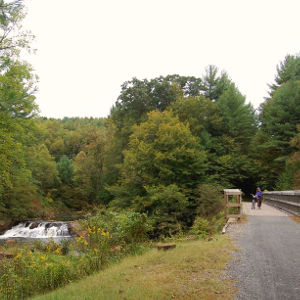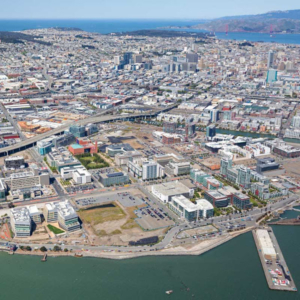Mid-Atlantic Broadband (MBC)
Developed a business plan for the commercialization of a carrier-neutral wholesale regional-transport network in Southern Virginia. The network was launched in 2005 and is currently well ahead of plan. MBC is widely viewed as a successful model of utilizing technology to re-purpose a local economy and has been cited by the Whitehouse Office of Science and Technology as a leading example of the impact of broadband in transforming a regional economy. MBC has successfully attracted over $4 Billion of direct investment in the region. Mr. Skinner was a charter board member of MBC. Mr. Picchi is currently a board member and serves as the chair of the Strategic Planning and Technology Committee.
Mason County, West Virginia
Conducted a comprehensive broadband assessment of this Ohio-River County in Western, West Virginia. Identified existing communications infrastructure, prioritized and ranked the unserved and underserved communities, and facilitated discussions with regional service providers. Developed a network plan and associated CAPEX to drive economic development in the Apple Grove commercial corridor and throughout the county.
Montgomery County, Virginia
Performed a broadband assessment of the County including the City of Radford and the Towns of Christiansburg and Blacksburg. We identified 9,000 households with inadequate or no service, developed a network plan and an $18 million capital budget to address the need, and outlined implementation strategies (with partners) to close the broadband gap.
Roanoke Valley Broadband Authority
Developed a business strategy and business plan for the implementation of a regional broadband network with a focus on driving economic development in the region. The Authority includes Botetourt County, Roanoke City and County, and the City of Salem.
Virginia Coalfield Coalition
Managed the deployment of a 39-tower wireless project in rural Southwest Virginia. The project resulted in the roll-out of 4th generation wireless services, expanding the reach of true mobile broadband service to many un-served and under-served communities. The scope of the project includes new 12 built-to-suit towers, upgrading 27 existing towers to fiber-backhaul capability, and deployment of a backbone system to aggregate all traffic. The project is believed to be the first full-scale deployment of a 4g network in a rural market in the United States. This project was the recipient of a national NADO impact award.
Virginia Planning Districts 1, 2, and 3
Identified specific needs of the region (13 counties and 3 cities) and communities to support technology-enabled, quality-of-life-improving applications. Explored remedial strategies, including an estimated cost to build a middle mile and last mile network to reach the various communities. Rank ordered and prioritized communities based on priorities, needs, households/citizens affected, and costs. Identified potential funding sources and strategies and facilitated service provider involvement to assist with implementation.
Wayne County, West Virginia
Conducted a comprehensive broadband assessment of this Ohio-River County in Western, West Virginia. Identified existing communications infrastructure, the un-and-underserved communities, and all regional service providers. Mapped all un-and-underserved households in the County. Developed a prioritization algorithm to rank-order the 31 communities in need of remediation. Developed a Capital Cost estimate for a FTTH solution in each community and a regional backbone to reach the communities.
West Virginia Planning Regions 1 and 4
This was a large study area of 11 counties in Southern, West Virginia that included the recreational areas along the new River Valley and Greenbrier, as well as the industrial corridors along Interstate 77. The region is large and diverse, but the need for broadband was nearly universal. We prepared an inventory of regional communications assets, identified all service providers, and evaluated all un-and-under served communities. The team developed comprehensive plans for market-based solutions to solve the issues.
Catellus Development
Organized and led a process to develop and implement a comprehensive technology plan at Mission Bay in San Francisco, a 340-acre redevelopment program adjacent to Pac Bell Park. The project included 5 million square feet of commercial space and 7,000 residential units in one of the densest master-planned communities in the country. The objective of creating the most advanced infrastructure in the world in a mixed-use community was accomplished through a disciplined planning, aggressive competitive bidding, and incisive negotiating process. Upon completion, Mission Bay was the first all-fiber master-planned community in the nation, with fiber to every door. Beyond the real estate enhancement, the team created over $25 mm of direct value for Catellus Development and new, derivative, lines of business.
City of Covington
Performed an evaluation of the City’s investments in communications enterprises, including Covington FiberNet, Covington CATV, Covington CableNet, and the non-core investment in Georgia Public Web. Given the competitive dynamics, we developed a plan outlining several strategic alternatives for the City to consider and coached City Council through the decision-making process and implemented the desired solution.
Consolidated Electric Cooperative, Delaware, Ohio
Performed a market evaluation and developed a business plan for this Ohio-based distribution cooperative to launch a regional carriers’-carrier telecom enterprise – Enlite Fiber. Later, conducted a market evaluation and feasibility study to engage in a Fiber to the Home (FTTH) retail communications service business.
Dominion Energy
Developed a business case to identify the market opportunity for Virginia Power to enter the commercial telecommunications market. The scope of the study included strategy development, market assessment, and financial analysis. A comprehensive business plan was developed and presented to Dominion Energy executives. The project was predicated upon re-farming of the utility’s microwave licenses.













